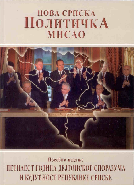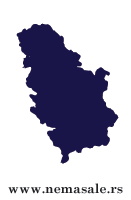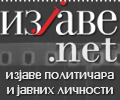| NSPM in English | |||
Foreign resources in economic development of Serbia |
 |
 |
 |
| среда, 21. јануар 2009. | |
|
It is necessary and advisable to use foreign resources for economic development of Serbia, as an additional source of investment, in the circumstances where domestic capital formation is insufficient. The analysis of the economic growth of Serbia measured by the growth rates of gross domestic product and the analysis of the share of foreign investment in gross domestic product, national income and in total gross investments of the national economy enable to understand the importance of foreign resources for the economic development of Serbia. The paper also considers the dynamicc and volume of borrowing, sectoral allocation of foreign investments, the position of the Country in the world economy, interrupted inflow of foreign resources during the period of international community’s political and economic sanctions introduced against Serbia, and the Country’s return to international capital markets. Key words: foreign direct investments, international borrowing and debt problem, international financing, international capital movements, economy of Serbia, foreign debts, foreign investments, international financial organizations, JEL Classification: F21, F34, F43. F21 International investment; long-term capital movements, F34 international finance, international lending and debt problems, F43 economic growth of open economics,
1. Introductuon Foreign resources have for a long time been used as an additional source of capital formation in the Serbian economy. They were in different development stages combined with other basic and supplementary sources of funding. Engagement of a certain volume and structure of foreign capital contributes in various ways to the economic development in different combinations with other sources of investment and other factors of production, depending on investment allocation and the option for either extensive or intensive economic growth. Investment is a necessary prerequisite; however, it does not mean per se an increase of production. The role of foreign resources has been to fill-in the lack of real domestic capital formation, and also to improve its natural structure by importation of investment oriented products.
2. Importance of Foreign Resources for Economic Development of Serbia Development trends in the Serbian economy and its current condition have deep roots in the economic structure formed in the past phases of economic development and in the allocation of investments from domestic and foreign sources. An empirical analysis shows that the economies of Serbia and Yugoslavia manifested similar, sometimes almost identical tendencies of the interdependence between foreign resources inflow and the economic development. Research of the development as a dynamic process, influenced by numerous factors, foreign capital being one of the most relevant, enables to discern certain regularities and systematic links between these economic phenomena and categories. Until 1980, the rates of investment growth were higher than average annual growth rates of the social product (gross domestic product). This trend was particularly pronounced in the 1952-1965 period, while their growth between 1976 and 1979 was somewhat slower than the rise of the social product. The period between 1980 and 1985 registered average annual drop in investments of 9%, primarily resulting from smaller inflow of foreign resources. General tendencies that manifested in Serbia and in the Yugoslav economy in the period between the end of the Second World war and the disintegration of the SFRY were the large allocation for capital formation from the national income: 22% to 28%, and the large share of investment (in fixed assets) in the social product of 35% (and in some periods of even 40%). Investment in fixed and working capital funds was more than two-fifths of the social product. Sizeable allocations for investment purposes were possible thanks to foreign assets. Their share in total gross investments in fixed assets was 22% in the period between 1952 and 1984. In different periods of the country’s development, assets were used from different sources. Until 1965, dominant were the grants, and thereafter workers’ remittances and foreign borrowing. In the seventies, foreign investments (mainly in the form of credits) became a dominant source of investment, reaching in 1975 one-third of aggregate capital formation. The analysis shows that periods with high rates of economic growth were, as a general rule, preceded by the periods with a significant inflow of foreign resources. The process of disinvestment in the Serbian economy during the nineties was a consequence of the smaller inflow of foreign resources. The existing economic capacities were worn out, most enterprises were loss makers and, consequently, there was no capital formation, while socially-owned fixed capital spilled over to consumption. According to the data of the UN Economic Commission for Europe, Economic Survey of Europe, real gross domestic product in Serbia and Montenegro was in 2004 by 46,3% lower than in 1989, while real industrial production was by 58,3% lower. Relatively high annual rates of economic growth of Serbia in the period between 2000 and 2007 (of about 5,5% per annum, on average), create a impression that Serbian economy is progressing at accelerated pace. However, it is necessary to take into account that as a base is taken the year in which the level of gross domestic product is low, and that the rates of growth of foreign resources inflow were much higher than the rates of economic growth. From late nineties until 2002, only 10% to 12% of gross domestic product was spent for investment in fixed capital funds. The share of gross investments in these funds rose in 2003 to 16% and in the period between 2004 and 2006 to 18% of gross domestic product. This increase resulted from increased inflow of foreign credits, primarily from multilateral sources which represented initial impulse for the investment activity. Larger inflow of foreign resources reflected on the rise of the growth rate of gross domestic product, and on the growth of gross national income per capita from USD 1.400 in 2002 to USD 4.730 in 2007, according to the World Bank Atlas, or to 10.220 international dollars (purcshasing power parity).1 Gross national income (GNI) comprises Gross domestic product (GDP) plus net receipts of primary income from foreign sources. The level of Serbia’s gross domestic product in 2007 amounted to 41.581 millions current USD. Gross domestic product purcshasing power parity (GDP PPP) amounted to 76.762 millions international dollars. The level of Serbia’s gross national income in 2007 amounted to USD 34.969 million (World Bank Atlas method). Positive trends in Serbia’s economy, measured by basic macroeconomic aggregates clearly show that economic development is in direct correlation with the inflow of foreign resources.
3. Foreign Resources in Economic Development of Serbia The volume and dynamics of the influx of foreign resources into Serbia since 2000 can be viewed through cumulated surplus of financial transactions and the rise of net foreign debt. Serbia’s foreign debt in 2006, in dollar terms, was by 81% larger than in 2000, and by 28% in EUR terms. The level of Serbian foreign debt in 2007 amounts USD 26.236 million (EUR 17.789 million). In 2007, foreign debt increased in dollar terms by 142% against that recorded in 2000, and by 53% in EUR terms. The inflow of capital formation from foreign sources is absorbed through the balance of payments deficit. The high cumulated surplus of financial transactions in Serbia in the period between 2000 and 2007 resulted from increased use of medium-term and long-term foreign credits and inflow of foreign direct investments. Importation of capital enables Serbia to temporarily finance the deficit of the current balance of payments, thanks to which it is not obligated to increase exports by all means. However, the time will inevitably come when it will have to ensure with imported capital (import of the factors of production instead of goods) an inflow of foreign exchange needed for debt repayment. The structure of Serbia’s foreign debt between 2000 and 2007 changed substantially: first were dominant the loans of multilateral and European financial organizations, followed by foreign direct investments. Starting from 2005, the borrowing by the private sector (commercial credits) has gone up. Since 2000, the economic structure in Serbia has been developing under the influence of foreign capital. The most dynamic sectors of the economy and the bulk of capital formation and investment have been influenced by foreign capital. Inflow of foreign resources has enabled increase of imports and development of the economic branches and industrial production based on imported raw materials and intermediates. Due to reorientation to import inputs in industrial production, net foreign exchange effect of exports is decreasing. Inflow of foreign resources from different sources has made a specific contribution to the development of Serbia. Inflow of international financial institutions’ capital contributed to the consolidation of macro-economic parameters. This was thanks to the IMF credit support, while investment activity and dynamic economic development were enabled by long-term loans of the World Bank and regional development institutions. However, the chances for a more dynamic growth of exports have not been fully availed of, although certain positive results were achieved in the reviving the production.
4. Foreign Direct Investments in Economic Development of Serbia Fresh foreign capital in the form of direct investments can make major direct contribution to the development of Serbia. According to to the data by the United Nations Conference on Trade and Development (UNCTAD) World Investment Report 2006: FDI from developing and transition economies: implications for development, Serbia and Montenegro,2 and Investment Horizons: Western Balkans,3 the influx of foreign direct investments into Serbia in 2005 was at the level of USD 1.481 million and their share in total fixed investments was 35,8%. At the close of 2005, stock of foreign direct investment was USD 5.428 million, so that is share in the gross domestic product was 20,7% (worlds average is 22,7%) These data indicate that Serbia is dependant on foreign capital formation and that it is necessary to increase the share of investments in gross domestic product, but also to provide more assets from domestic savings. Foreign direct investments are characterized by large oscillations, both in terms of volume and in geographical orientation and branch structure. The region of Western Balkans is becoming an interesting area for investors for several reasons: the size of the market, raw materials, skilled labor force and low cost of the labor force, and the new multilateral arrangement - Central European Free Trade Agreement (CEFTA) in South-East Europe. Serbia became interesting for foreign investors only after the year 2000. It would be good if foreign markets were more open for Serbian commodities and capital. The structure of foreign investments in Serbia is unfavorable. The share of services is large, while investment in production is at a low level. Also is small the number of green-field investments with the participation of foreign capital, while long-term business undertakings with foreign partners in the form of joint ventures have been almost non-existent over a rather long period of time. Arrangements for collective investment of assets, organization of production, risk-bearing and profit-sharing could play an important role in spurring domestic production and economic growth. The study Benchmarking FDI Opportunities, Investment Horizons: Western Balkans, prepared by the World Bank Affiliation, Multilateral Investment Guarantee Agency, notes that in this region two sectors are particularly interesting for foreign investors: production of motor vehicle parts and production of food and beverages. Present is the trend of reallocation of the production of cars and spare parts from the Central and Eastern European countries to south-east Europe. Serbia needs to avail of the readiness of foreign investors to invest in the Balkan region and in these sectors. Traditional experience and qualified labor force in the field of automotive industry, if manage to attract foreign investments, will create the preconditions for increased exportation of automobiles and larger foreign exchange inflow. In this country, foreign direct investments are viewed primarily as income, while proceeds from the sale of domestic companies to foreign buyers are not deemed to be an investment. Insufficient importance is attributed to FDIs and to their strength to spur the restructuring of the domestic economy.
5. Conclusion Inflow of foreign capital has produced effects on the rise of the gross domestic product per capita, development of certain branches, improving social standard, employment, exploitation of natural resources, supply of the domestic market, consumption, the balance of payments of Serbia. There is no doubt that foreign resources have had a positive impact on the economic development of Serbia; unfortunately, however, investments have not been always efficiently used to increase production, employment, supply of the domestic market with both the factors of production and consumer goods, create the conditions necessary for the manufacturing of export-oriented goods and, accordingly, of exports. The economic growth of Serbia has since 2000 been characterized by the rates of growth which were lower when compared with the rates of foreign resources inflow and the increase in the country’s indebtedness in the period under review. There are few sectors where physical volume and value of production are growing, while a large number of economic branches are registering losses in their operation. The results of foreign capital formation inflow into Serbia are certain revival of the economy, inflow of fresh capital, a large share of foreign investment in total investments of the country. However, foreign resources have not been sufficiently allocated in the production which can ensure the economic growth. Direct contribution of foreign assets to the growth rate of the Serbian economy was equal to their share in the rate of investments.
R E F E R E N C E S Annual Report (2002, 2003, 2004, 2005, 2006. and 2007.), Statistical Bulletins and Economic Review of the National bank of Serbia, National bank of Serbia, Belgrade. Bulletin of the National bank of Yugoslavia, Annual Report (1983, 1984, 1985, 1986, 1987, 1988, 1989, 1990, 1991, 1992, 2000, 2001, 2002, 2003. and 2004.), National bank of Yugoslavia, Belgrade. Economic Survey of Europe 2005; UNECE Common Database; national statistics; CIS Statistical Committee, Yugoslavia 1918-1988, Statistical yearbook, (1989). Statistical office of SFR Yugoslavia,, Belgrade. Yugoslavia 1945-1985, (1986). Statistical office of SFR Yugoslavia, Belgrade. Kovačević, Radovan. (2006), „Possibilities and Limitations of Export as a Factor of the Balance of Payments of Serbia“, International problems No 4/2006, Institute of International Politics and Economics, Belgrade. MIGA, Benchmarking FDI Oportunities Investment Horizon: Western Balkns, May 2006. Milićević, Dragovan. (2006). Balance of Payments and exchange rate, Institute of Economic Diplomacy, Belgrade. Ognjanović, Vuk. (2004). International banking, Grifon and Faculty of trade and banking, Belgrade. Statistical yearbook of Serbia and Montenegro 2005, (2005), Serbia and Montenegro Statistical office, Belgrade. UNCTAD, World Investment Report 2005. UNCTAD, World Investment Report 2006. CIS Statistical Committee; UNECE Common Database; national statistics; Economic Survey of Europe, 2005. World Bank, World Development Indicators database, July 1, 2006. http//webrzs.statserb.sr.gov.yu http//www.sr.gov.yu/investment/sectors/index.html
1. Gross national income (GNI) per capita: Formerly Gross national product or GNP the broadest measure or national income, measures total value added from domestic and foreing sources claimed by residents.[^] 2. UNCTAD, World Investment Report 2006: FDI from developing and transition economies: implications for development, Serbia and Montenegro, www.unctad.org/wir or www.unctad.org/fdistatistics[^] 3. UNCTAD, World Investment Report 2005, Annex B; Investment Horizons: Western Balkans, с. 64.[^] |
Од истог аутора
Остали чланци у рубрици
- Playing With Fire in Ukraine
- Kosovo as a res extra commercium and the alchemy of colonization
- The Balkans XX years after NATO aggression: the case of the Republic of Srpska – past, present and future
- Из архиве - Remarks Before the Foreign Affairs Committee of the European Parliament
- Dysfunction in the Balkans - Can the Post-Yugoslav Settlement Survive?
- Serbia’s latest would-be savior is a modernizer, a strongman - or both
- Why the Ukraine Crisis Is the West’s Fault
- The Ghosts of World War I Circle over Ukraine
- Nato's action plan in Ukraine is right out of Dr Strangelove
- Why Yanukovych Said No to Europe

.jpg)
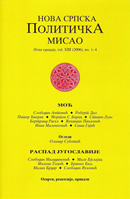
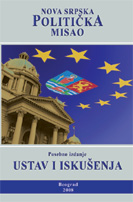
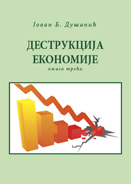
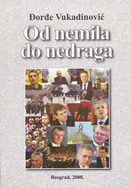
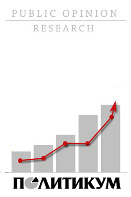
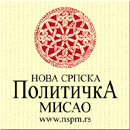


 ABSTRACT
ABSTRACT